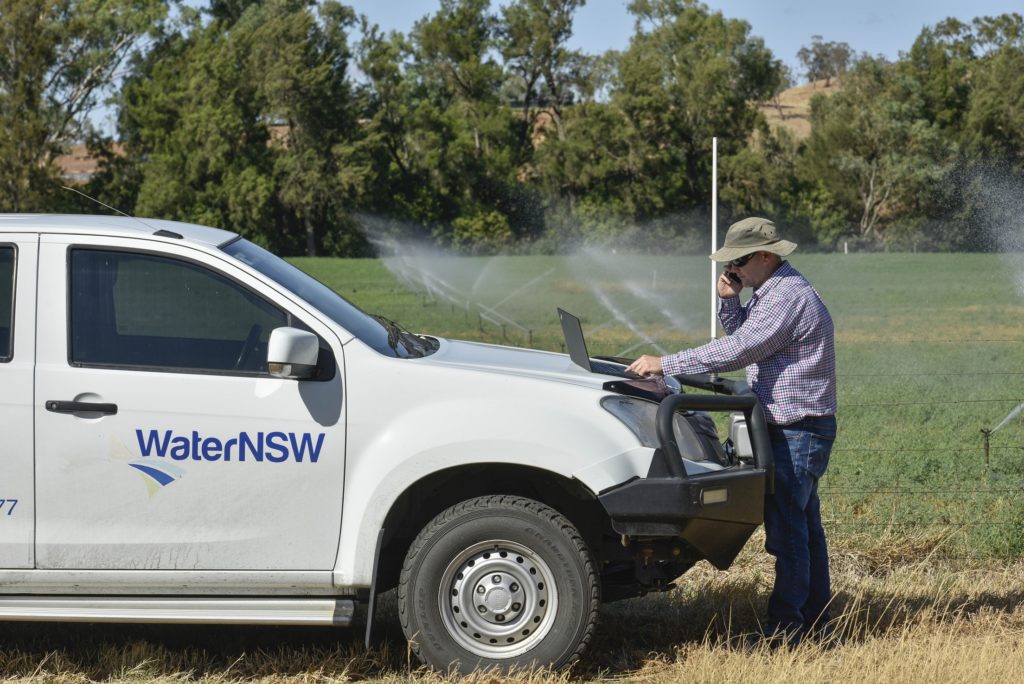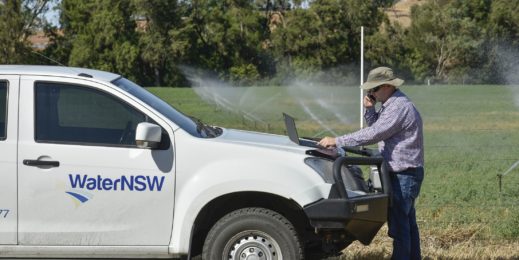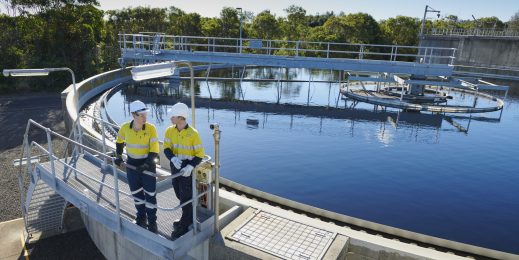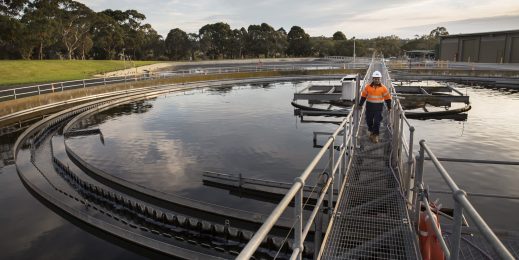
WaterNSW lays the foundation for HR automation using robust technology
WaterNSW is a state-owned corporation established in 2015 after the successful merger of the State Water Corporation and the Sydney Catchment Authority.

The organisation manages rivers in New South Wales and supplies two-thirds of the state’s water to regional towns, irrigators, Sydney Water Corporation and local water utilities. It also owns and operates the largest surface and groundwater monitoring network in the Southern Hemisphere.
In 2018, WaterNSW embarked on a major digital transformation program to consolidate all the systems it inherited following the merger of the State Water Corporation and Sydney Catchment Authority. It deployed Microsoft Azure, Microsoft Dynamics 365 Finance and Operations and Microsoft Office 365 to unify its operations into a single, cloud-based enterprise resource planning and productivity system.
The transformation program is well underway according to a three-horizon strategy: create a foundational back office and infrastructure (including the Dynamics 365 implementation); focus on operations and information access; and optimise and improve the system through automation and artificial intelligence.
“We have our core building blocks in place and have developed a range of microservices and DevOps delivery models that mean we are now in a good position to shift to Horizon 3 and break down manual business processes and enhance decision support and business insight,” says Ian Robinson, WaterNSW CIO.
It has been exciting to see the evolution of Microsoft’s cloud products – and their evergreen nature means we can focus on business improvement rather than system operations.
Focus on safety and culture
WaterNSW also needed to enhance the systems and processes of its Safety, People and Culture team – an integral part of any organisation. With approximately 1,000 full-time employees and contractors on its payroll, WaterNSW’s Safety, People and Culture team manages significant volumes of enquiries and incidents each day. However, a lack of supporting technology was making it hard for the team to accurately capture data and generate reports.
“An integrated approach to HR digitalisation was needed,” says Sreedevi, Platform Head for Corporate Systems at WaterNSW. “We needed to be bold and operate as one to simplify, digitalise and innovate end-to-end human interaction.”
Removing complexity and increasing efficiency
In 2020, WaterNSW adopted Microsoft Dynamics 365 Human Resources as its core HR solution. The organisation also launched an automated employee performance management system as part of the implementation.
“To unlock the true power of technology, we must have strong foundations,” Sree says. “Microsoft Dynamics 365 Human Resources became the focal point of our HR systems. We wanted to lead with simplicity, remove complexity and streamline our systems, making it easy for everyone to navigate.”
WaterNSW wanted to augment its HR services to business units by bringing in new, more personalised capabilities.
“We needed to implement an HR case management tool to manage our employee needs,” Sree explains.
There is a fundamental difference between HR case management and IT case management. IT systems are built around the case and how quickly it can be solved, whereas HR case management tools are built with the employee as the cornerstone. We needed an exclusive HR case management solution.
Using Dynamics 365, WaterNSW deployed a case management system that automates workflows and directs employee requests efficiently. For example, a generic enquiry is sent to a shared service centre for an HR adviser to address. Or, if an employee has a specific request regarding leave arrangements, they can submit a form straight to the payroll specialist. This level of automation has enabled faster and more accurate case resolution than using manual processes.
An agile approach to delivery
WaterNSW began developing its case management platform in December 2021. It gave back-office HR staff early access so they had time to recommend optimal changes, then released the platform to all employees in March 2022.
Sree says the switch from a project-based delivery model to an agile, sprint-based delivery model was key to deploying the platform swiftly.
“That staged approach gave us the ability to hear the real requirements through the course of the program, rather than shutting the doors at the start point and saying, ‘Here are your requirements and here is what you’ll get’,” she says.
“It was an effective way of trialling the new solutions and collaborating across our teams and functions, determining effectiveness and minimising risk – testing, learning and refining as we went. Successes could be scaled, and lessons learnt shared, driving continuous improvement and reinforcing learning.”
Creating a more human-centric workplace
The case management platform has resulted in several improvements to WaterNSW’s HR operations. These include better reporting functionality using a single source of data, and the ability to provide accurate information on demand to external parties, lawyers, auditors, and WaterNSW executives and managers.
It has also improved the organisation’s ability to adhere to employee relations, unified enterprise agreement and record management obligations. WaterNSW can now capture, categorise, report and store complete employee requests and relations more accurately and securely.
The Dynamics 365–powered platform has removed several manual processes, as well as those involving duplication across multiple systems. It has also created synergy between other people and culture modules such as performance management and record keeping.
Employees and managers are now able to create, track and escalate their own HR requests. Even better, WaterNSW can more accurately determine HR resourcing requirements.

The system’s knowledge base feature provides a simple way to reduce the number of enquiries the HR team receives. According to Sree, this ‘tier zero’ support allows employees to help themselves to information they previously couldn’t access without contacting the HR department.
“For instance, if an employee searches for information regarding a pay advance, it made sense to not only return the pay advance policy, but also include a form where the employee could actually request the advance,” she says.
The organisation has also gained cost efficiencies by being able to streamline low-level functions and automate HR processes using Dynamics 365.
“We can comfortably say that we have laid down the foundational system that we can now build on as part of our HR automation journey,” Sree notes.
“There is certainly still a lot more to unpack. Analysing those factors helps us appreciate the unique dynamics that transformed into today’s reality. With that in mind, we are asking our new leaders for their fresh perspectives on what the future of HR technology means to them.”
WaterNSW wants to build an HR model that gives its leaders the tools they need to be more effective, and provides employees with a more fulfilling experience.
“We want to introduce more self-service capabilities by building artificial intelligence and embedding robotic process automation where possible,” Sree says.
It’s really about making the workplace happier and more responsive, and uplifting the employee quotient by allowing them to focus on things that matter more than repetitive, mundane tasks that can be done by a bot.
Simplifying and harmonising IT
A key reason WaterNSW chose to deploy Dynamics 365 was its ability to unify data from the organisation’s HR department and other areas such as finance and operations. As a result, the organisation has built a robust architecture that enables it to easily leverage cross-platform technologies and data points.
“Simplify and harmonise is one of the core values that we embed as part of our architectural boards,” says Sree. “When we review anything, we always want to simplify and harmonise the IT landscape, and not have five different vendors to talk to for five different capabilities.
“We have a one-stop shop with Microsoft, which elevates our ability to service the business.”








